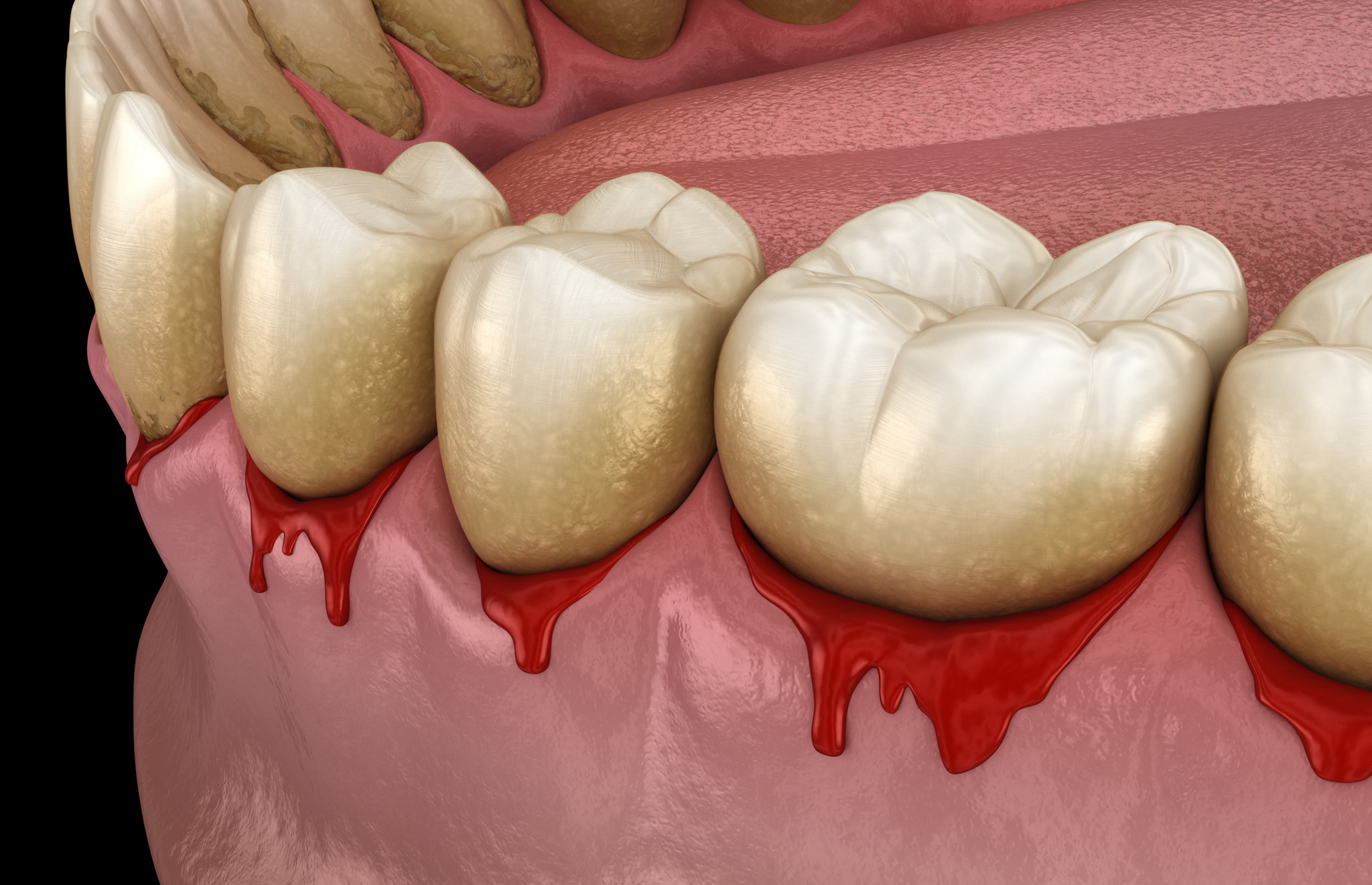Red, irritated, bleeding gums, and tooth loss are all ranging symptoms of gum disease. Gum disease is a common condition that affects thousands each year. In fact, nearly half of all adults over the age of 30 have some form of gum disease. Additionally, over 70% of adults over the age of 65 have gum disease—according to the Centers for Disease Control and Prevention (CDC). This means that it is highly likely that most adults will have gum disease at some point in their life.
Gum disease is highly treatable, especially when a dentist catches it in the early stages. The first signs of gum disease include bleeding or inflamed gums, bad breath, and sensitive teeth. If you are able to get to a dentist in this stage, a proper cleaning and better oral hygiene can rid you of its symptoms. However, if you fail to go to a dentist, your prognosis will be much grimmer. Advanced gum disease may require surgery in order to undo and prevent any further damage to your mouth.

Symptoms of Gum Disease
In the early stages of gum disease, you may notice mild bleeding when brushing or flossing your teeth. This may also cause some slight tenderness in your gums too. Additionally, your teeth may become sensitive to hot or cold temperatures when you consume food or drinks. As the disease progresses, your gums will begin to pull away from your teeth.
Receding gums are a sign that gum disease is beginning to take a more severe turn. When your gums recede, it affects the foundation of your teeth. This will actually loosen your teeth, potentially causing your teeth to fall out. At this point, your gums are actively infected, which will cause problems throughout your body. This means that your body can experience an inflammatory response. An inflammatory response will affect your immune system, which is responsible for defending your body against illness, infection, and disease.
In the advanced stages of gum disease, the soft tissues of your gums will begin to deteriorate. This means that your teeth will loosen and fall out. Additionally, you will experience bone loss in your jaw bone. Advanced stages of gum disease are associated with extreme pain.
Treatment Options
The stages of gum disease dictate what your treatment options will be. In the beginning stages of gum disease, enhanced oral hygiene and professional cleanings can stop gum disease from advancing. The leading cause of gum disease is oral hygiene, so starting at the beginning can do wonders.
As gum disease progresses, your dentist may prescribe antibiotics to kill the infection in your gums. At this point, you will need to have multiple follow-up appointments to ensure your progress. With advanced gum disease, you may need to undergo surgery. Generally, a dentist would perform a “flap” surgery that allows them to clean deeply under your gums. Your dentist will cut flaps into your gums so that they can clean the root of your teeth to remove plaque buildup. Once your dentist removes the plaque, they will stitch your gums back together.
